The Australian Shepherd Blue Heeler Mix makes a wonderful watchdog. I learned that from my friend Alex, who decided to welcome one of these incredible dogs into his life. You should have heard him narrating.
“I did some reading, and talked to a few breeders, and the more I learned about the Australian Shepherd Blue Heeler Mix, the more I was convinced. Their loyalty, energy… it’s boundless. And I thought, if they can protect a ranch, they can surely protect my home and be a fantastic playmate for the kids.”
His enthusiasm was infectious, and it’s easy to see why because their loyalty and energy know no bounds.
If this hardworking herding dog is just what you are looking for, keep reading!
TABLE OF CONTENTS
- Australian Shepherd Blue Heeler Mix Breed Summary
- Australian Shepherd Blue Heeler Mix Parent Breeds
- Australian Shepherd Blue Heeler Physical Characteristics
- Blue Heeler Australian Shepherd Mix Personality and Temperament
- A Day in the Life of the Blue Heeler Aussie Mix
- Blue Heeler Australian Shepherd Mix Care Guide
- Blue Heeler Australian Shepherd Mix Health Issues
- How Much Does An Australian Shepherd Blue Heeler Mix Cost?
- FAQs on the Blue Heeler Aussie Mix
- A Farmer's Favorite Companion
- Other Blue Heeler and Australian Shephard Mixes
Australian Shepherd Blue Heeler Mix Breed Summary
Australian Shepherd Blue Heeler Mix Parent Breeds
From Adobe Stock
The Australian Shepherd Blue Heeler Mix is also known as a Texas Heeler or a Texas Cattle Dog. It’s a mix of an Australian Shepherd and the Australian Cattle Dog. The Aussie Shepherd was bred for herding flocks of sheep, and the blue heeler is meant to keep cattle in line. Therefore, this mix is a wonderful all-purpose farm dog that can do a little bit of both.
We should first look at both parent breeds to understand the mix well.
Australian Shepherd
Origin
You might find it funny that despite its name, it’s not actually from Australia. They originally descended from Pyrenean Shepherds, brought over to Australia from Europe. While in Australia, these shepherds were mixed with Collies, creating a unique blend that eventually made its way to the US in the early 20th Century. It’s a bit of a twist in their tale, considering modern Australian Shepherds got their start in California, of all places! The breed was officially recognized in 1993, relatively recent in the grand dog timeline.
Physical Characteristics
When you look at an Australian Shepherd, the first thing you’re likely to notice is their striking appearance. They’re medium-sized dogs, but what really sets them apart is their beautiful, often multi-colored coat and mesmerizing eyes, which can be blue, brown, or even one of each. Their build is solid and muscular, a testament to their herding heritage, designed for agility and endurance.
Temperament and Behavior
As for their temperament, Australian Shepherds are as loyal and hardworking as they come. They’re incredibly smart, which makes them a joy to train, though their intelligence means they need plenty of mental stimulation to stay happy. I’ve always admired their versatility, not just as herding dogs but their ability to excel at pretty much any task you put in front of them, from agility competitions to search and rescue work. Their energy levels are high, so they’re best suited for active families or individuals who love spending time outdoors.
Australian Shepherds have a playful and affectionate side that makes them great companions. They’re protective of their families, which adds to their appeal as not just pets but members of the family. However, their herding instinct is strong, and they might try to herd children or other pets by gently nipping at their heels, which is something to keep an eye on.
Blue Heeler
Origin
Now, let’s chat about the Blue Heeler, or as they’re officially known, the Australian Cattle Dog. These dogs are the real Aussie deal, born and bred in Australia with a history as colorful as their unique coats. Their lineage is a mix of several breeds, including Smithfield cattle dogs, Australian dingoes, Collies, and even Dalmatians. Introduced to the United States in the 20th Century, they were recognized by the AKC in 1980. It’s fascinating to think about how these dogs were crafted to meet the demanding needs of Australian cattle farmers, embodying the spirit of innovation and adaptation.
Physical Characteristics
Blue Heelers are compact, muscular dogs, built for stamina and agility. Their most distinctive feature has to be their coat, which isn’t just blue but speckled or mottled with black, creating a striking appearance. Some have patches of black, blue, or tan on their heads, and it’s this coloring that often turns heads. They’re the kind of dog you can’t help but take a second look at when you see one in the park. Their alert, expressive eyes, and strong, sturdy build make them perfectly suited for long days working on the ranch or playing in the yard.
Temperament and Behavior
If you’re looking for a dog with energy to spare and keen intelligence, the Blue Heeler is your match. They’re workaholics at heart, always on the lookout for a job to do, which makes them happiest. Training them is a breeze thanks to their smart, focused nature, but they do require a firm, consistent hand and plenty of mental and physical exercise to keep them from getting bored.
Blue Heelers form strong bonds with their owners, offering loyalty that’s as deep as the ocean. They’re protective, too, making excellent watchdogs who will let you know if anything amiss is happening around your home. Just like the Australian Shepherd, they have a natural herding instinct, so don’t be surprised if they try to herd you and your family by nipping gently at your heels. It’s all in good fun, but it’s something to be aware of, especially around young children.
Australian Shepherd Blue Heeler Physical Characteristics
From Adobe Stock
When it comes to the Blue Heeler Australian Shepherd Mix, it’s like opening a box of chocolates – you never quite know what you’re going to get. But, one thing’s for sure, they’re always a delightful surprise. Although there’s no official breed standard for these mixes, there are some common traits that shine through.
Size, Height, and Weight
You’re looking at a medium-sized dog that carries itself with a certain grace, thanks to those long and lean running legs. It’s like they’re built for the marathon sessions of play and work they so love. On average, the males of this mix stand tall at 18-20 inches and weigh about 30-50 pounds, while the females are slightly more petite, measuring 17-19 inches and weighing in at 25-40 pounds. What’s clear is that whether male or female, these dogs have a presence that’s hard to ignore.
Coat and Colors
Now, let’s talk about their coats. If you’re someone who appreciates a splash of color in your life, the Blue Heeler Aussie Mix is the dog for you. Their fur could be a canvas of almost any color, with patterns that include blue merle and calico. It’s like each one is a unique piece of art, with a blend of colors that can catch anyone’s eye. The black and grey speckles or even polka dots, a signature look passed down from their Blue Heeler lineage, add to their distinct appearance.
Their coat, which can be either short or medium in length, feels as smooth and silky as it looks. And despite what you might expect from such a colorful dog, they’re surprisingly low maintenance when it comes to shedding. A weekly brush is usually all it takes to keep their coat looking pristine. It’s as if they know how to keep themselves camera-ready without much fuss.
Blue Heeler Australian Shepherd Mix Personality and Temperament
From Adobe Stock
First off, it’s important to remember that at their core, these dogs are workers through and through. They thrive on having a job to do, something that keeps them busy and taps into their natural herding instincts. I’ve seen firsthand how they can go from sunrise to sunset on a farm, never missing a beat.
Now, bringing such a dog into a more suburban or city environment means you’ve got to get creative. They need an outlet for their boundless energy. Without it, they might turn your backyard or sofa into their personal project, and not in a good way. I always joke with my friends that if you don’t live on a ranch, you might just need to turn your backyard into a mini one with an outdoor pen or something similar to keep these pups satisfied.
When they’re in work mode, they might not seem like the most affectionate creatures, focusing intensely on their tasks. But, let me tell you, after a long day of play or work, there’s nothing they love more than relaxing with their family. They might not be the biggest cuddlers, but their way of showing love, by keeping a watchful eye on the house and being ever so loyal, is just as meaningful.
Barking is part of the package with these dogs. On a farm, they’re the alarm system, letting you know if anything’s amiss. At home, they’ll do the same, which means training is key to helping them learn friend from foe. It’s a bit of a journey, filled with patience and understanding, but eventually, they get there, even if it means your house is a bit louder in the meantime.
They’re perhaps better suited for families with older kids or adults. The reason is that their herding instinct can lead to a bit of heel-nipping, a habit that’s adorable in puppies but needs to be addressed early on. Speaking of puppies, they can be a tad shy around new faces, so early socialization is crucial.
Don’t expect your Blue Heeler Aussie Mix to be the type that showers you with kisses and cuddles. Their affection is shown in more subtle, meaningful ways, like being your steadfast companion and guardian. They’re the type to show their love by being there, watching over you and your home, always ready to alert you if something’s not quite right. It’s this unique blend of loyalty, energy, and independence that makes them such fascinating and rewarding companions.
A Day in the Life of the Blue Heeler Aussie Mix
Before you’ve even thought about hitting the snooze button, your Blue Heeler Aussie Mix is already up and about. They’re not just early risers; they’re the self-appointed guardians of the household, patrolling your home to ensure everything is as it should be.
When it’s time for you to wake up, don’t be surprised if your furry alarm clock is there, nudging you out of bed with an eagerness that’s both heartwarming and, at times, a little bit demanding. Their morning ‘zoomies’ are more effective than any cup of coffee at kickstarting your day.
Breakfast is quickly followed by what they live for – activity. Whether it’s a run, a brisk walk, or some playtime in the yard, this mix thrives on physical exercise and mental stimulation. It’s their version of a morning coffee, essential for a good start to the day.
If you’re heading off to work and can’t take them with you, arranging for a midday break is crucial. A dog walker or a visit from a friend can help them burn off some of that boundless energy and keep them from becoming restless.
Once you’re back, the real fun begins. The afternoons are for adventures – walks, park visits, hikes – anything that lets them explore and expend energy. They’re at their happiest when they’re on the move, discovering new sights, smells, and sounds alongside you.
As evening approaches and their energy finally starts to wane, a quieter playtime in their outdoor enclosure or a final stroll can help them settle. They’ll be ready to curl up for the night, whether it’s beside your bed as a loyal protector or in their own space outside, keeping a watchful eye until morning comes around again.
Even through the night, your Blue Heeler Aussie Mix may be on alert, checking in on the household. But, rest assured, they’ll be ready to do it all over again the next day, eager for new experiences and challenges.
Blue Heeler Australian Shepherd Mix Care Guide
From Adobe Stock
Taking on a Heeler Mix can indeed be a challenge, but for those willing and able to meet their needs, the reward is a level of loyalty unmatched by any other. This dog’s strong prey drive, boundless energy, and keen alertness are key traits that require consideration and understanding.
Feeding
Here, we’ll delve into feeding guidelines that are as much about fostering health and happiness as they are about satisfying hunger.
Quality Over Quantity
When it comes to feeding your Australian Shepherd Blue Heeler Mix, the quality of the food is paramount. These dogs thrive on high-quality, nutrient-dense dog foods that cater to their energetic lifestyle. I always recommend choosing a brand that lists real meat as the first ingredient, ensuring your furry friend gets the protein they need for muscle maintenance and energy. It’s also wise to look for foods free from unnecessary fillers and artificial additives, as these can detract from the overall nutritional value.
Food Tailored to Their Life Stage
The nutritional needs of a Blue Heeler Aussie Mix change as they grow. Puppies, for instance, require diets rich in calories and specific nutrients to support their rapid growth and development. On the other hand, adult dogs need a well-balanced diet that supports their energy levels without contributing to weight gain. And for the seniors among these mixes, lower-calorie diets that still provide ample protein, but with added joint support, can make their golden years comfortable and active.
The Right Portion Size
Portion control is another critical aspect of feeding your Australian Shepherd Blue Heeler Mix. Given their propensity for activity, it’s tempting to free-feed or offer large portions. However, even active dogs can gain weight if their caloric intake exceeds their energy output. I find that measuring their food based on the guidelines provided by the food manufacturer, then adjusting based on your dog’s activity level, weight, and health, is the best approach. Regular check-ins with your vet can also help you fine-tune their portions to maintain an ideal weight.
Frequency of Feeding
How often you feed your Blue Heeler Aussie Mix can impact their health and happiness. Puppies generally require three to four smaller meals a day to support their growth and energy levels. As they transition into adulthood, reducing their feeding to twice daily can help regulate their energy and prevent overeating. This routine not only supports their physical health but also provides structure to their day, contributing to their overall sense of security and well-being.
Incorporate Fresh Foods
While commercial dog foods provide a convenient and balanced diet, incorporating some fresh foods can offer additional health benefits and variety. Foods like carrots, blueberries, and lean meats can be great treats and supplements to their diet. However, it’s important to introduce new foods slowly and in moderation to avoid upsetting their stomach. Always research or consult with your vet before adding new foods to your dog’s diet, as some common human foods can be harmful to dogs.
Grooming
I’ve come to understand that grooming is not just about keeping them looking good, but also about maintaining their physical well-being. Let’s dive into the grooming guidelines to help your Blue Heeler Aussie Mix look and feel their best.
Regular Brushing
The coat of an Australian Shepherd Blue Heeler Mix can vary, but regular brushing is a must to keep it in top condition. I recommend brushing your dog at least two to three times weekly to remove loose hair and prevent matting. This keeps their coat shiny and healthy and reduces the amount of hair around your home. During shedding season, you might need to brush them daily. A de-shedding tool or a slicker brush works wonders for getting through their dense fur and straight to the undercoat.
Bathing Basics
While these dogs love the outdoors, they don’t need frequent baths. Over-bathing can strip their coat of natural oils, leading to dry skin and irritation. I’ve found that bathing your Blue Heeler Australian Shepherd Mix every 2-3 months, or when they get particularly dirty, is sufficient. Always use a dog-specific shampoo that’s gentle on their skin, and make sure to thoroughly rinse to avoid residue build-up, which can cause itching.
Nail Trimming
Keeping your dog’s nails trimmed is not just a cosmetic concern; it’s crucial for their comfort and health. Long nails can cause pain and lead to problems walking or running. If you can hear their nails clicking on the floor, it’s time for a trim. For those new to nail trimming, it can seem daunting, but with the right tools and patience, it becomes a straightforward task. If you’re unsure, ask your vet or a professional groomer to show you how to safely trim your dog’s nails.
Ear Care
The ears of your Australian Shepherd Blue Heeler Mix require regular checks to prevent infection, especially if they have floppy ears. I suggest gently wiping the outer part of their ears with a damp cloth and an ear cleaner recommended by your vet. This helps prevent the buildup of wax and debris, which can lead to infections. Be observant of any signs of discomfort, bad odor, or unusual discharge, as these could indicate an issue that needs vet attention.
Dental Hygiene
Don’t overlook dental care in your grooming routine. Regular teeth brushing can prevent dental diseases, which are common and can lead to serious health issues. Introducing dental care early, using a dog-specific toothbrush and toothpaste, makes this a comfortable part of their routine. Additionally, dental chews and toys can help keep their teeth clean and healthy between brushings.
Training and Exercise
Training and exercising these dogs is about more than just physical activity; it’s about engaging their sharp minds and deep-seated work ethic. Let’s dive into what makes their training and exercise needs so unique.
Exercise
The energy level of a Blue Heeler Australian Shepherd Mix is something to behold! From my experience, they need at least 1-2 hours of exercise daily. This could be long walks, runs, or even agility training, which they absolutely love. I’ve found that incorporating a variety of activities not only keeps them physically fit but also mentally stimulated. It’s not just about tiring them out; it’s about enriching their lives. Remember, a tired dog is a happy dog, and with this mix, that saying couldn’t be truer.
Training
When I talk about training these pups, I emphasize starting as early as possible. It’s like setting the ground rules from day one because their Blue Heeler tenacity and Aussie intelligence can test your limits. They’re looking to see if you’re consistent and firm, yet kind in your guidance.
In those moments when training feels like an uphill battle, it’s crucial to stay calm and positive. If you show frustration, your Australian Shepherd Blue Heeler Mix will pick up on that vibe, which isn’t helpful.
I find that having the owner around during socialization makes a big difference for an Australian Shepherd Blue Heeler Mix. They might be hesitant around strangers, so early socialization helps them become more comfortable around new people. They might not become the most extroverted dogs, but they can learn to be okay with others.
This breed mix is not one to sit around idly. They crave engaging activities and challenges. Therefore, mix up their routine with outdoor adventures like hiking or running. Games that stimulate both their body and mind, like tag, are great. These activities also offer the chance to practice commands such as “sit”, “stay”, and “heel” in a fun setting.
Mental Needs
These dogs are smart. Really smart. Providing mental stimulation for your Australian Shepherd Blue Heeler Mix is just as important as physical exercise. I’ve seen firsthand how puzzle toys, obedience training, and even simple games like hide-and-seek can make a huge difference in their demeanor. Engaging their brains daily helps prevent boredom and related behavioral issues. Trust me, investing time in mentally challenging activities pays off with a well-behaved and content companion.
Socialization
Socializing your Blue Heeler Aussie Mix is crucial for their development and well-being. I’ve noticed that early exposure to different people, pets, and environments helps them become more adaptable and less anxious in new situations. Socialization isn’t just about playing with other dogs; it’s about building their confidence and teaching them how to behave in a variety of scenarios. Whether it’s a visit to the local café or a busy park, these experiences enrich their lives and strengthen your bond.
Blue Heeler Australian Shepherd Mix Health Issues
From Adobe Stock
Caring for an Australian Shepherd Blue Heeler Mix goes beyond daily exercise and mental stimulation; it’s also about being vigilant and proactive about their health. From my observations and the research I’ve delved into, it’s clear that these energetic dogs, a blend of robust Australian Shepherd resilience and Blue Heeler toughness, can sometimes face health challenges unique to their genetic makeup. Here’s a closer look at a common health issue they may encounter:
Hip Dysplasia
This condition is something I’ve seen more than a few times in larger breeds and mixes like the Australian Shepherd Blue Heeler. Hip dysplasia occurs when the ball and socket of the hip joint don’t fit or develop properly, leading to arthritis or lameness. Symptoms can range from a slight limp to a noticeable difficulty in standing up or climbing stairs. It’s heartbreaking to see a dog full of life face such challenges in moving around.
The causes of hip dysplasia are generally twofold: genetics and environment. On the genetic side, it’s inherited from the dog’s parents. Environmentally, factors like rapid weight gain, improper diet, or excessive or insufficient exercise during the puppy’s growth phase can exacerbate the condition.
Progressive Retinal Atrophy (PRA)
One such condition that stands out is Progressive Retinal Atrophy (PRA), a genetic condition that gradually deteriorates the retina, leading to eventual blindness. Witnessing a dog’s transition as they lose their sight can be both profound and heart-wrenching. The early signs might be subtle—maybe they start bumping into furniture or become hesitant in low-light conditions. It’s a silent progression, one that initially might not be obvious, given these dogs’ remarkable adaptability.
The root cause of PRA is purely genetic, and while there’s no cure, understanding its impact is vital. It reminds us of the importance of genetic testing and choosing responsible breeders who test for such conditions.
Deafness
Another health concern that can affect this mix is deafness, particularly for those dogs inheriting the merle gene, which is associated with a higher incidence of hearing issues. Early detection can be challenging, especially in a bustling household where a dog might compensate for hearing loss with increased reliance on their other senses.
Deafness in these dogs is something that tugs at the heartstrings, especially considering how it can affect their interaction with the world around them. Yet, it also opens up avenues for deepening the bond between dog and owner, through the use of hand signals and other non-verbal forms of communication.
How Much Does An Australian Shepherd Blue Heeler Mix Cost?
From Adobe Stock
I’ve found that the average price for an Australian Shepherd Blue Heeler Mix puppy is $500. Those with a rare fur color will be slightly more expensive. On top of that, adult dogs may be at a lower price due to their lower demand. Overall this is a very affordable breed.
- Puppy: $200-$700
- Adult: $200-$400
- Adoption: $150-$250
Here are some buyer tips:
- This breed is very popular in their home state of Texas so you are most likely to find a breeder there. Outside of Texas, the breed is harder to find and more expensive.
- Make sure you check their lineage before you buy a pup. Often this mix is confused with the Australian Shepherd Border Collie Mix and you might be getting a different breed than the one you expected!
- When budgeting for your new puppy you will need to factor in the amount of space it takes to keep one. Heeler Mixes are at their happiest outdoors and will need a large amount of land to exercise on if they live inside.
- Certain fur colors such as merle can be more expensive due to the higher demand. You should consider a more common fur color (like black or tan) if you are on a budget.
- Training classes will be needed to socialize this breed. Most classes will charge by the hour however you should shop around for what is best for your budget. Some intensive training classes can run up to $100 or more.
Similar Breeds
| Australian Cattle Dog |
|---|
From Adobe Stock |
| Price: $600-$1000 |
| Lifespan: 12-15 years |
| Family Friendly: Yes |
| Size: 35-50 pounds |
| Shed: Low/Medium |
| Activity: High |
| Border Collie |
|---|
From Adobe Stock |
| Price: $500-$1000 |
| Lifespan: 10-17 years |
| Family Friendly: Yes |
| Size: 25-45 pounds |
| Shed: Medium |
| Activity: High |
FAQs on the Blue Heeler Aussie Mix
What is the average lifespan of a Blue Heeler Australian Shepherd Mix?
One of the most common questions about the Australian Shepherd Blue Heeler Mix is about their longevity. Generally, these hearty and robust dogs enjoy a lifespan ranging from 12 to 15 years. Just like any other aspect of their lives, their longevity is a tapestry woven from genetics, care, nutrition, and regular exercise.
Are Blue Heeler Aussie Mixes good with children?
Navigating the dynamics between dogs and kids is always a topic ripe for discussion. The Blue Heeler Aussie Mix can be a fantastic companion for children, especially when socialized early and taught boundaries from a young age. However, due to their herding instincts, they might attempt to herd small children by nipping at their heels. It’s not aggressive but an instinct. Early training and consistent supervision are key to nurturing positive interactions. With the right guidance, these dogs can form unbreakable bonds with kids, protecting them and sharing in their everyday adventures.
How much exercise does an Australian Shepherd Blue Heeler Mix need?
If you’re considering bringing a Blue Heeler Australian Shepherd Mix into your life, be prepared to lace up your walking shoes! These dogs are a bundle of energy, requiring at least 1 to 2 hours of vigorous exercise daily. Think long hikes, runs, and even agility training to keep their minds and bodies in top shape. It’s not just about physical exertion; these intelligent dogs crave mental stimulation, too. Integrating puzzle toys, training sessions, and new experiences can help satisfy their need for activity. It’s a great way to bond and ensure your four-legged friend stays happy and healthy.
Can Australian Shepherd Blue Heeler Mixes adapt to apartment living?
Living in an apartment with a dog known for its high energy levels and work ethic might seem daunting. The truth is, while the Australian Shepherd Blue Heeler Mix can adapt to apartment living, it requires a proactive approach to meet their exercise and mental stimulation needs. Without access to a yard, daily walks runs, and frequent trips to the park become even more crucial. Additionally, creative indoor activities can help keep them engaged. It’s all about commitment; if you’re ready to invest the time and energy, your Blue Heeler Aussie Mix can thrive in an apartment setting.
What are the grooming needs of a Blue Heeler Aussie Mix?
The Blue Heeler Aussie Mix’s coat is relatively low maintenance, but that doesn’t mean it’s a set-it-and-forget-it situation. They typically have a short to medium-length coat that sheds moderately year-round, with a potential increase during shedding seasons. Regular brushing, about once or twice a week, can help manage the shedding and keep their coat healthy. Additionally, routine bathing, nail trimming, and ear checks should be part of their care regimen. It’s a great opportunity for bonding and ensures your pup not only looks their best but feels great too.
A Farmer’s Favorite Companion
If you’re an active individual or part of an active family with a love for the outdoors, the Australian Shepherd Blue Heeler Mix could be the perfect addition to your life. These dogs thrive with owners who can provide them with the physical exercise and mental stimulation they crave. They’re suited for those with experience in handling and training dogs, especially working breeds, given their high intelligence and energy levels. If you’re someone who enjoys hiking, running, or any outdoor adventure, and you’re willing to invest time in training and socializing your dog, you’ll find a loyal, energetic, and incredibly devoted companion in this mix.
On the flip side, this mix might not be the best fit for first-time dog owners or those with a more sedentary lifestyle. Their energy and intelligence mean they require a lot of time, patience, and consistency in training, which can be overwhelming for someone without previous experience. Additionally, if you’re away from home often or don’t have the space for them to run and play, this breed could develop behavioral issues from boredom or lack of exercise. Families with very young children might also find the breed’s herding instincts challenging, as they may attempt to herd the children, leading to nipping or rough play.
Please let us know if you have any questions in the comments section below…
Other Blue Heeler and Australian Shephard Mixes
If you’re interested in learning about other Blue Heeler mixes or Australian Shephard mixes, check out the hybrid dog breeds below.
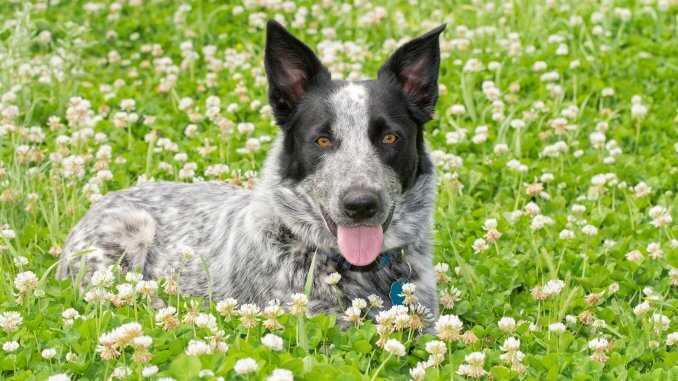
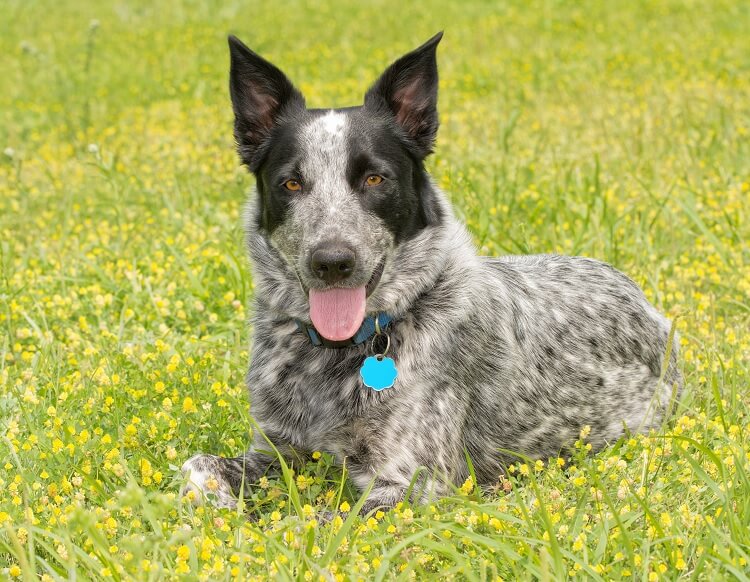
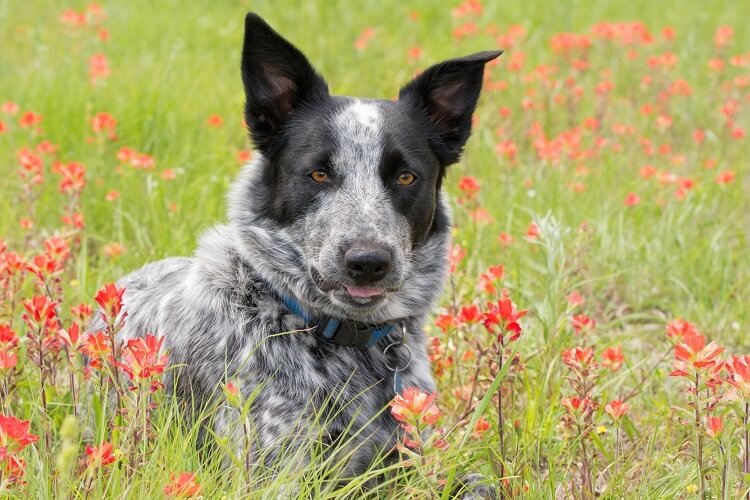
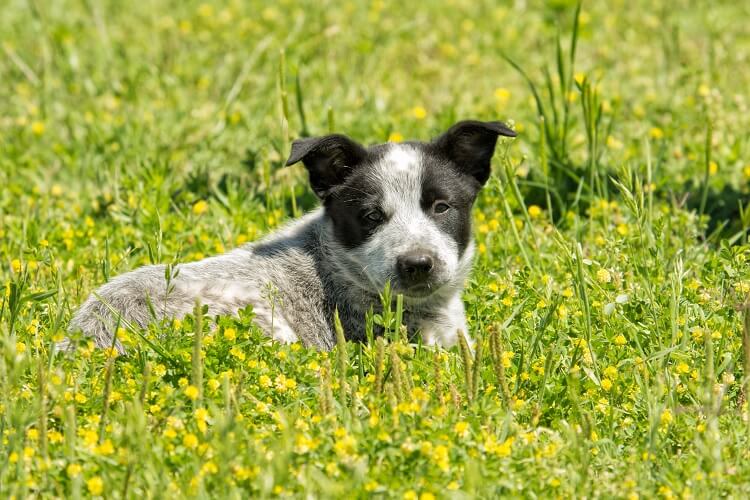
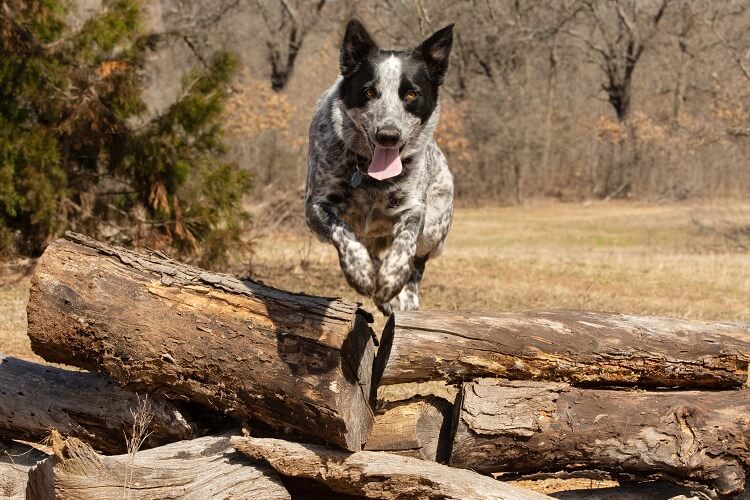
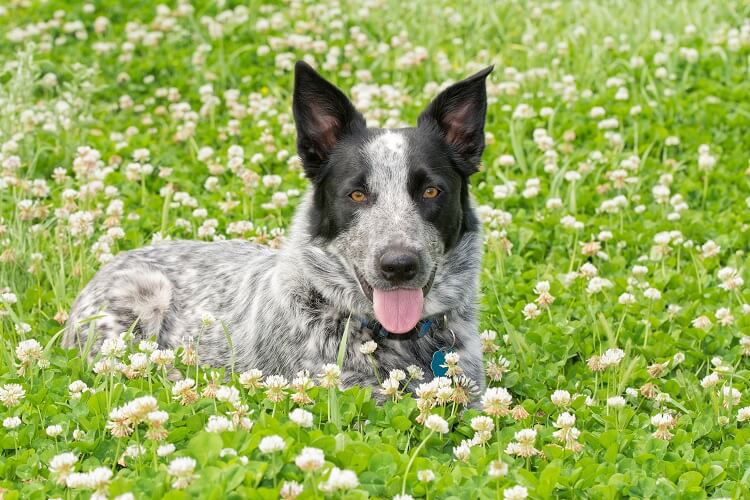
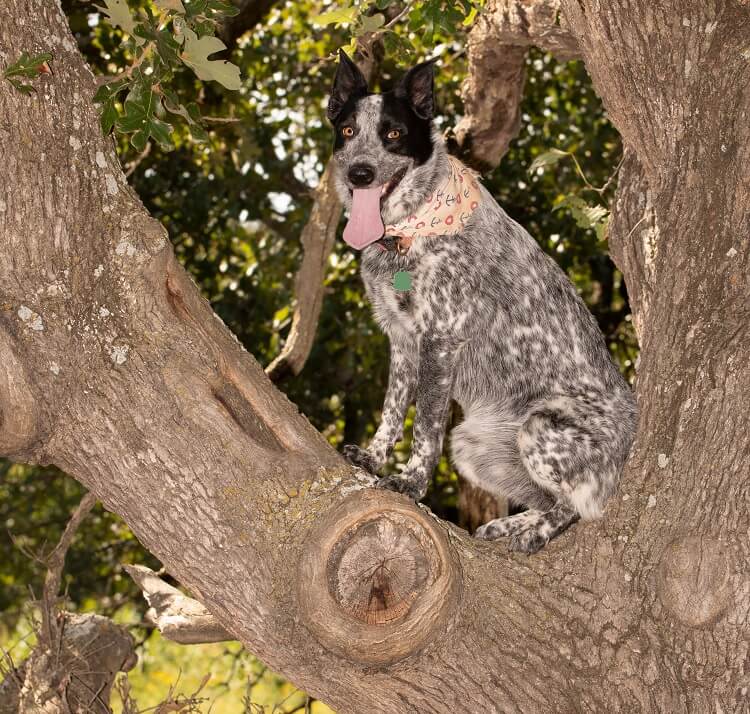
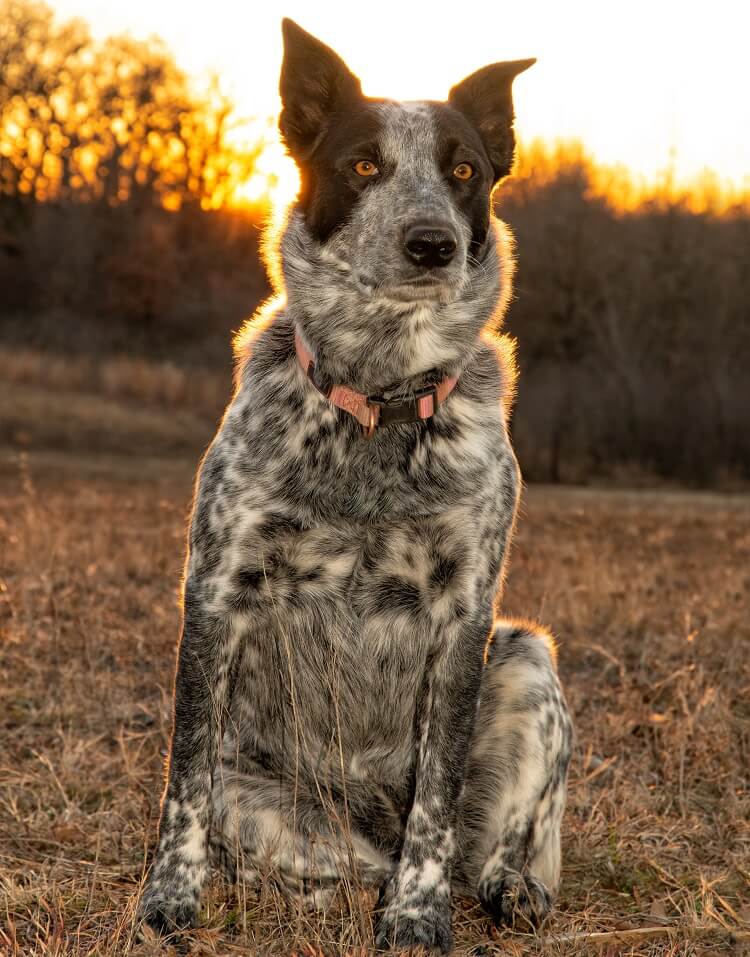
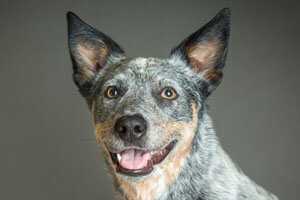
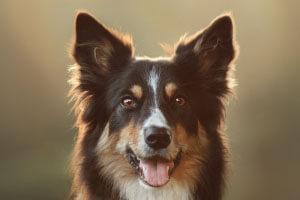

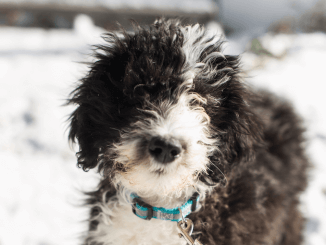


I love my Texas heeler! We both are active, adventure seekers! We are inseparable! Definitely not a dog for first time handlers.
Have a Texas Heeler four months old today. Most loyal, playful, smart companion. They do pickup on words and your mood easily. They almost talk back and have a conversation with you. Enjoying this little guy every day of every hour, as he goes everywhere I go. I would like a recommendation on food. I thought Pro Plan was one of the best but realize or think he may have allergies to the food.